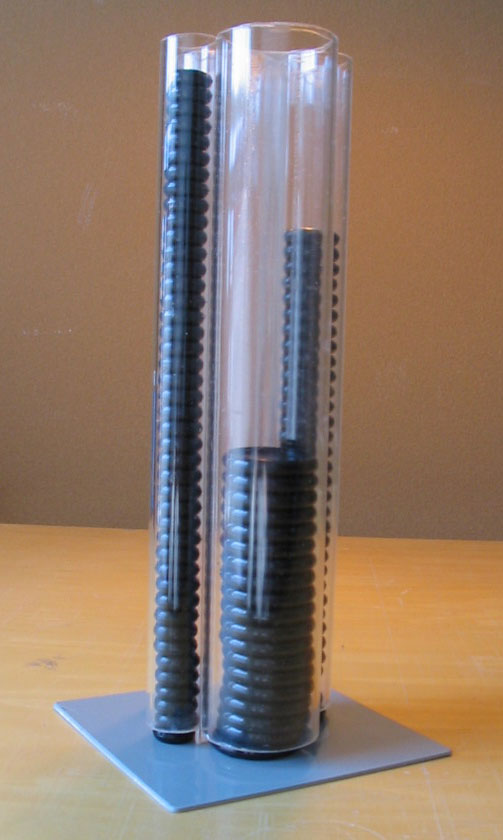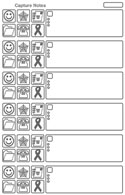It seemed like the perfect irony: “Archives Organization to Delete Its Own Archives.”
Variations of this headline appeared on quite a few blogs last week when the Society of American Archivists (SAA) announced its intention to delete the accumulated e-mail traffic on its listserv, which dated back to 1993. The SAA’s explanation was that cost of maintaining the list was outweighing its usefulness. Following standard archival procedure, archivists appraised the collection to assess its informational and evidentiary value (that is, to determine whether the collection warranted preservation either because of the long-term value of the information it contained, or because of the value of the collection as a unique artifact in and of itself) and determined that the collection could be discarded.
The outcry that followed, and the subsequent decision by the SAA to forego discarding the collection in favor of trying to find a permanent home for it, provided a telling example of how archives are perceived — and misperceived — by the world at large.
Continue reading “some thoughts about the SAA listserv story”

 The Tuesday Hack is a little early this week because I couldn’t wait to introduce my weekend DIY project: a prototype Rollabind ring dispenser.
The Tuesday Hack is a little early this week because I couldn’t wait to introduce my weekend DIY project: a prototype Rollabind ring dispenser. The strengths of the hPDA concept — ruggedness, reliability, and simplicity — derive from its preferred medium, the humble 3×5 card. But as hard as it is for me to admit, paper does have its limitations. Ink affixes the data to the storage medium statically, and in doing so it limits the user’s ability to manipulate the data.
The strengths of the hPDA concept — ruggedness, reliability, and simplicity — derive from its preferred medium, the humble 3×5 card. But as hard as it is for me to admit, paper does have its limitations. Ink affixes the data to the storage medium statically, and in doing so it limits the user’s ability to manipulate the data. But until scientists figure out a way to manufacture smart 3×5 cards (and for any scientists reading this, there’s probably a Nobel Prize in it for you), here’s the best of both worlds — a quick hack for my wife’s Palm that blends the yin of a PDA with the yang of a hipster (or is it the other way around?). It uses three small Rollabind rings affixed to a sheet trimmed from a poly file folder, which is then slipped into the leather holder’s card pocket. A stylus with a built-in pen allows her to translate between the two with ease. The hPDA is perfect for shopping lists, quick reminders, and taking notes on the fly. The PDA manages her complex and ever-changing calendar.
But until scientists figure out a way to manufacture smart 3×5 cards (and for any scientists reading this, there’s probably a Nobel Prize in it for you), here’s the best of both worlds — a quick hack for my wife’s Palm that blends the yin of a PDA with the yang of a hipster (or is it the other way around?). It uses three small Rollabind rings affixed to a sheet trimmed from a poly file folder, which is then slipped into the leather holder’s card pocket. A stylus with a built-in pen allows her to translate between the two with ease. The hPDA is perfect for shopping lists, quick reminders, and taking notes on the fly. The PDA manages her complex and ever-changing calendar. Not only are freelance writers their own bosses, they are also their own administrative assistants. And every doubling of duty results in a halving of available time. That’s one of the reasons that freelancers represent such a large proportion of the audience for organizational systems like David Allen’s Getting Things Done, Merlin Mann’s 43 Folders, and planners like Day-Timer and Franklin Covey.
Not only are freelance writers their own bosses, they are also their own administrative assistants. And every doubling of duty results in a halving of available time. That’s one of the reasons that freelancers represent such a large proportion of the audience for organizational systems like David Allen’s Getting Things Done, Merlin Mann’s 43 Folders, and planners like Day-Timer and Franklin Covey. For editors on the run, we offer two templates with the most commonly used proofreader’s marks grouped into handy categories (Insert, Appearance, Position, and Correction). Plus, there’s an additional quick-reference section spotlighting common grammatical mistakes — all packed into two highly-readable 3×5 hPDA templates for your
For editors on the run, we offer two templates with the most commonly used proofreader’s marks grouped into handy categories (Insert, Appearance, Position, and Correction). Plus, there’s an additional quick-reference section spotlighting common grammatical mistakes — all packed into two highly-readable 3×5 hPDA templates for your  Two new downloads today designed for taking notes on-the-go. These note capture forms (in both portrait and landscape format) are designed to let you take quick notes that you’ll transfer somewhere else later — a website to bookmark, an action item to add to your calendar, or even a great idea for a new hPDA template.
Two new downloads today designed for taking notes on-the-go. These note capture forms (in both portrait and landscape format) are designed to let you take quick notes that you’ll transfer somewhere else later — a website to bookmark, an action item to add to your calendar, or even a great idea for a new hPDA template.